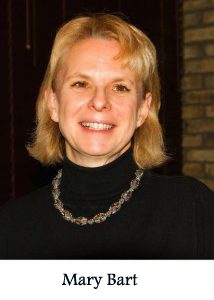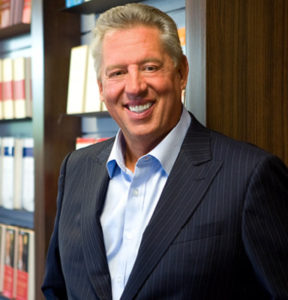
Alex Koch
I sure wish I had known Alex Koch, founder and principal at Insight Legal, when I decided to pursue my passion as a full-time profession. Don’t get me wrong: entrepreneurship has its perks. But the legalities involved are pretty prosaic, for a right-brained creative like me. In this week’s Write-or-Die Girl column, Alex breaks down business-starting steps into bite-sized, digestible morsels.
The Province of Ontario presents entrepreneurs with many opportunities to start businesses, firstly as a host to a significant portion of the Canadian population, and secondly as a province offering its residents some of the country’s highest incomes. For this reason, many entrepreneurs are seeking to commence their business ventures in Ontario; however, it is not always abundantly clear where these entrepreneurs should start and how they should proceed.
To help guide these entrepreneurs, I have compiled a list of steps involved in starting a business in Ontario.
STEP 1 – SELECT YOUR BUSINESS STRUCTURE
Prior to starting any sort of business operation, entrepreneurs must choose the appropriate business structure for their business. If entrepreneurs are seeking to start a business on their own, they will consider operating as a sole proprietorship or a corporation. Alternatively, for entrepreneurs seeking to start a business venture with one or more co-founders, they will consider operating as a partnership or corporation. You can click here for a discussion on how to choose the appropriate structure for your business. Each structure will carry with it different registration and legal compliance requirements, making it one of the most important steps in starting a business.
 STEP 2 – CHOOSE YOUR BUSINESS NAME
STEP 2 – CHOOSE YOUR BUSINESS NAME
Choosing your business name carries with it two aspects. On the one hand, businesses want to choose a name that suits their business and can attract customers. On the other hand, business names must meet the criteria of certain legal requirements.
Sole Proprietorship/General Partnership
Depending on the name chosen for a sole proprietorship or a partnership, business owners may have to register their business name with the Ministry of Government and Consumer Services. To operate a sole proprietorship or a partnership using only the name(s) of the founder(s), the business name does not need to be registered and the entrepreneurs are free to commence their business operation. For instance, if your name is John Galt, you can operate a sole proprietorship called “John Galt” without registering the business name. Likewise, if two founders are seeking to start a partnership and their names are John Galt and Bunbury Smith, they can operate a business using their names only without registration. If however, business owners are seeking to make additions to their business name, for example “John Galt & Sons,” the business name must be registered.
There are certain prohibitions relating to business name registration, for instance, the words “Limited, Incorporated, Inc., etc.” cannot be used since they imply that the business is incorporated. Likewise, neither a sole proprietorship nor a partnership name may imply an association with a government entity. If companies do not comply with these registration requirements, they may be fined.
Corporation
All corporations in Ontario must have a name. Companies are able to choose between two types of corporate names: (1) a numbered name automatically chosen during the incorporation process; and (2) a chosen name. If an entrepreneur is choosing his/her corporate name, the name must comply with certain standards. Specifically, the name must be distinctive and it must not be misleading or likely to be confused with names used by other organizations and businesses. Further, the name must end with a word indicating that the business is incorporated such as, Inc., Ltd., Incorporated, Limited, etc.
STEP 3 – CONDUCT A NAME SEARCH
Sole Proprietorship/Partnership
Registering a sole proprietorship or partnership name with the Ministry of Government and Consumer Services does not guarantee exclusivity of the name, meaning that businesses with identical names can be registered. Using a name that is the same as another business or is confusingly similar to another business name could result in a lawsuit from an existing company using that name. For this reason, it is prudent for business owners to conduct a name search prior to registration to determine whether a chosen name is already in use by another company.
Corporation
Companies that chose a corporate name (and not a numbered name), must obtain a NUANS (New Upgraded Automated Name Search) report that is not older than 90 days on the date of registration. A NUANS report lists names of companies using the same or similar name to the chosen corporate name. Unlike with sole proprietorships or partnerships, corporations are not permitted to register identical names to another business unless a company can provide satisfactory evidence that the two businesses will not be confused by consumers.
 STEP 4 – REGISTER YOUR BUSINESS
STEP 4 – REGISTER YOUR BUSINESS
Once an entrepreneur has selected the business name and conducted a name search, the business is ready for registration.
Sole Proprietorship/Partnership
To register a name with the Ministry of Government and Consumer Services, the entrepreneur must provide the Ministry with: (1) the name and address of the business; (2) a description of the business activity; and (3) the entrepreneur’s name and home address. If a partnership is being registered, the names and homes addresses of the partners must also be included. There are many options for registering a business name; the registration process can be completed online, in-person or by mail. Once a name is registered, the business will receive its Master Business License which acts as proof of business name registration and the entrepreneur may commence its business operations.
Corporation
To register a corporation, entrepreneurs can submit their application for incorporation to the Ministry of Government and Consumer Services. The application must include: (1) the company’s Articles of Incorporation which outline the name and nature of the business, the directors of the corporation, the share structure, etc.; (2) a covering letter that outlines the name and contact information for the corporation; and (3) the NUANS report pertaining to the corporate name. Companies that submitted their application for incorporation in Ontario are only provided with name exclusivity in the province meaning that businesses with identical names can incorporate in other provinces. If this poses an issue, the entrepreneur should consider a federal incorporation.
It is possible for corporations to incorporate with one name and to operate their business under another name. If that is the case, the corporation must register its name with the Ministry of Government and Consumer Services in the same manner as a sole proprietorship or a partnership registers its name.
STEP 5 – APPLY FOR LICENCES AND CERTIFICATIONS
Once a business is registered, the business must now register for whatever other licences, registrations, or certifications required to legally operate a business in a particular industry. Depending on the nature of its business, a company may need a business licence to operate. Likewise, a company may need Workers’ Compensation Insurance or to collect HST. In general, if a company provides taxable goods or services and earns over $30,000 per year, the company must register for an HST number with the Canada Revenue Agency and remit the HST it collects to the government.
 STEP 6 – RENEW YOUR BUSINESS REGISTRATION
STEP 6 – RENEW YOUR BUSINESS REGISTRATION
Once a business is operational, there are various ongoing requirements with respect to registration. For instance, sole proprietorships and partnerships must renew their business name every five years. On the other hand, corporations must make annual filings with the Ministry of Government and Consumer Services.
If you have a business idea but are unsure about how to turn your idea into reality, contact Alex Koch at Insight Legal.




 Creative thinking helps us uncover new and innovative ways to look at situations.
Creative thinking helps us uncover new and innovative ways to look at situations. Here are just a few:
Here are just a few: Stories are sticky and remembered up to 22 times more than facts alone, according to cognitive psychologists. It should come as no surprise that smart professionals use business storytelling to drive change in their organizations.
Stories are sticky and remembered up to 22 times more than facts alone, according to cognitive psychologists. It should come as no surprise that smart professionals use business storytelling to drive change in their organizations. Effective storytelling can help professionals quickly share their vision, inspire bold action, and even build trust, Ron explains, but there is a formula to crafting effective narratives.
Effective storytelling can help professionals quickly share their vision, inspire bold action, and even build trust, Ron explains, but there is a formula to crafting effective narratives. If you didn’t attend the most recent Avanti Women gathering, Women in Transition, you missed out on one heck of an empowering, knowledge-packed evening.
If you didn’t attend the most recent Avanti Women gathering, Women in Transition, you missed out on one heck of an empowering, knowledge-packed evening.
 Alosha Paranavithana gave advice to help young adults transition smoothly into the workforce in her Goddess Lean-In Circle, ‘Backpack to Briefcase’. Her key piece of advice for our women’s group centred on setting goals, yet being flexible with the prospects.”Do you know what you want? That’s a big question,” she said to the crowd. “You need to know the answers to those sorts of questions but not have the expectation that things will go exactly the way you planned them because there will be obstacles and challenges down the road.”
Alosha Paranavithana gave advice to help young adults transition smoothly into the workforce in her Goddess Lean-In Circle, ‘Backpack to Briefcase’. Her key piece of advice for our women’s group centred on setting goals, yet being flexible with the prospects.”Do you know what you want? That’s a big question,” she said to the crowd. “You need to know the answers to those sorts of questions but not have the expectation that things will go exactly the way you planned them because there will be obstacles and challenges down the road.”
 Lisa Mitchell talked our women’s group through the experience of moving through fear and uncertainty to pursue their true professional passions in her talk,’Discover Career Possibilities’. She told her Lean-In Circle attendees to stay focused on the potential positive outcomes of their career transition, rather than psyching themselves out by the possibility of failure. “When we’re considering a transition, we’re wired to start our thought process with, ‘what if it’s just a disaster?'” she said. “Flip it! Start by asking yourself, ‘what if it all works out?'”
Lisa Mitchell talked our women’s group through the experience of moving through fear and uncertainty to pursue their true professional passions in her talk,’Discover Career Possibilities’. She told her Lean-In Circle attendees to stay focused on the potential positive outcomes of their career transition, rather than psyching themselves out by the possibility of failure. “When we’re considering a transition, we’re wired to start our thought process with, ‘what if it’s just a disaster?'” she said. “Flip it! Start by asking yourself, ‘what if it all works out?'” In Lissette Edward Copperi’s Goddess Circle on ‘Branding’, she stressed the importance of being mindful of what you publish on social media. “Every single posting you make really shapes people’s perceptions of you, one way or the other,” she warned. “And now more than ever, it is common practice for employers to check out candidates on social media first to weed out the people who are not a good fit.”
In Lissette Edward Copperi’s Goddess Circle on ‘Branding’, she stressed the importance of being mindful of what you publish on social media. “Every single posting you make really shapes people’s perceptions of you, one way or the other,” she warned. “And now more than ever, it is common practice for employers to check out candidates on social media first to weed out the people who are not a good fit.” Kate Hodgson taught women how to shape their professional stories in a way that engages potential clients and future employers in her ‘Storytelling’ Lean-In. “When you’re telling your story in a professional sense, the end should always demonstrate the lessons that you learned,” she shared. “How do you reflect back on your experience? What are the things you don’t do any more?” she posed to the group. “What lessons came out of the entire experience that you now absorb as a part of who you are and can offer to somebody else.”
Kate Hodgson taught women how to shape their professional stories in a way that engages potential clients and future employers in her ‘Storytelling’ Lean-In. “When you’re telling your story in a professional sense, the end should always demonstrate the lessons that you learned,” she shared. “How do you reflect back on your experience? What are the things you don’t do any more?” she posed to the group. “What lessons came out of the entire experience that you now absorb as a part of who you are and can offer to somebody else.” In the Goddess Lean-In Circle, ‘Advancing your career’, Teresa Gabriele spoke to our women’s group about the importance of knowing themselves thoroughly and using that information to enhance their job searches. She stressed the importance of being authentic and consistent in way you present yourself. “Make sure any employer that’s going to be creeping on you—and I’m sure they will—is going to see the same story that you’re selling on your resume, in your interview, or at an informal meeting at a coffee shop,” she advised. “It’s amazing how many people you will meet just randomly that will check your LinkedIn profile, so have the right communication theme about who you are and what you bring to the table.”
In the Goddess Lean-In Circle, ‘Advancing your career’, Teresa Gabriele spoke to our women’s group about the importance of knowing themselves thoroughly and using that information to enhance their job searches. She stressed the importance of being authentic and consistent in way you present yourself. “Make sure any employer that’s going to be creeping on you—and I’m sure they will—is going to see the same story that you’re selling on your resume, in your interview, or at an informal meeting at a coffee shop,” she advised. “It’s amazing how many people you will meet just randomly that will check your LinkedIn profile, so have the right communication theme about who you are and what you bring to the table.” In her mid 40s, Mary Bart became the primary caregiver for her mother, with Alzheimer’s, and father, with cancer. For 10 years, often seven days a week, Mary drove 40 minutes south to her parents’ home where she did “all the things that daughters do,” she explained.
In her mid 40s, Mary Bart became the primary caregiver for her mother, with Alzheimer’s, and father, with cancer. For 10 years, often seven days a week, Mary drove 40 minutes south to her parents’ home where she did “all the things that daughters do,” she explained. Like any purposeful pioneer, Mary identified a need in the current market and sought to fill it with her expertise. In 2008, coupling her 18-year professional technology background with a recent decade of personal, hands-on caregiving experience, she founded
Like any purposeful pioneer, Mary identified a need in the current market and sought to fill it with her expertise. In 2008, coupling her 18-year professional technology background with a recent decade of personal, hands-on caregiving experience, she founded  Eleanor Silverberg, owner and director of
Eleanor Silverberg, owner and director of  Canada’s aging population is growing and fuelling caregiving needs across the country. By 2030,
Canada’s aging population is growing and fuelling caregiving needs across the country. By 2030, 

 “Without change, we remain stagnant, expose our organizations to financial losses, and lose our relevance in the marketplace,” explained the event’s host Yvonne Ruke Akpoveta, CEO at
“Without change, we remain stagnant, expose our organizations to financial losses, and lose our relevance in the marketplace,” explained the event’s host Yvonne Ruke Akpoveta, CEO at  “Your company culture has to demonstrate that you earn leadership because you’re the best, not because you’ve been there the longest; if your culture protects that kind of environment, nothing is going to change.”
“Your company culture has to demonstrate that you earn leadership because you’re the best, not because you’ve been there the longest; if your culture protects that kind of environment, nothing is going to change.” “Forty-four per cent of Canadian companies said they had courage, but only 11 per cent of companies in Canada actually had courage (statistics cited from Deloitte’s 2016 report
“Forty-four per cent of Canadian companies said they had courage, but only 11 per cent of companies in Canada actually had courage (statistics cited from Deloitte’s 2016 report  “I think diversity is one of the most important issues in terms of innovation and creative thinking. There’s an old saying that, if you and I think alike, then one of us is redundant.”
“I think diversity is one of the most important issues in terms of innovation and creative thinking. There’s an old saying that, if you and I think alike, then one of us is redundant.”  “There are things like
“There are things like  “Relevance is not just about having a customer focus but also an employee and community focus… At RBC, we have a very healthy paranoia about being and staying relevant.”
“Relevance is not just about having a customer focus but also an employee and community focus… At RBC, we have a very healthy paranoia about being and staying relevant.” “
“ “We rally employees behind the vision of us being a tech company that offers banking services.”
“We rally employees behind the vision of us being a tech company that offers banking services.” 
 If your website comes equipped with a content management system, perform all the updates –including ones for the program and plug-ins—when prompted. “This might sound pretty obvious, but many people ignore these messages for weeks or longer,” says Opal. “The programmers roll out these security updates constantly because they’ve found vulnerabilities in their programs that they’ve patched. If you don’t do your updates, you’re a sitting duck for security problems.”
If your website comes equipped with a content management system, perform all the updates –including ones for the program and plug-ins—when prompted. “This might sound pretty obvious, but many people ignore these messages for weeks or longer,” says Opal. “The programmers roll out these security updates constantly because they’ve found vulnerabilities in their programs that they’ve patched. If you don’t do your updates, you’re a sitting duck for security problems.” Your website must be mobile friendly. “That’s non-negotiable,” Opal warns. “For most people, more than 50 per cent of their website traffic comes from mobile devices, so you’re just throwing away business if your site is not loading properly on a cell phone or tablet.” The simple housekeeping rule is to check your website on multiple devices periodically, especially after doing the updates mentioned in tip number one, she adds.
Your website must be mobile friendly. “That’s non-negotiable,” Opal warns. “For most people, more than 50 per cent of their website traffic comes from mobile devices, so you’re just throwing away business if your site is not loading properly on a cell phone or tablet.” The simple housekeeping rule is to check your website on multiple devices periodically, especially after doing the updates mentioned in tip number one, she adds. STEP 2 – CHOOSE YOUR BUSINESS NAME
STEP 2 – CHOOSE YOUR BUSINESS NAME STEP 4 – REGISTER YOUR BUSINESS
STEP 4 – REGISTER YOUR BUSINESS STEP 6 – RENEW YOUR BUSINESS REGISTRATION
STEP 6 – RENEW YOUR BUSINESS REGISTRATION
 Taste of Toronto
Taste of Toronto Pride Toronto
Pride Toronto TD Toronto Jazz Festival
TD Toronto Jazz Festival Toronto Fringe Festival
Toronto Fringe Festival Fan Expo Canada
Fan Expo Canada Of course, Avanti Women is always on the lookout new volunteers with a variety of skills and interests—and a passion for fun (that’s essential!)—all year round.
Of course, Avanti Women is always on the lookout new volunteers with a variety of skills and interests—and a passion for fun (that’s essential!)—all year round. 
